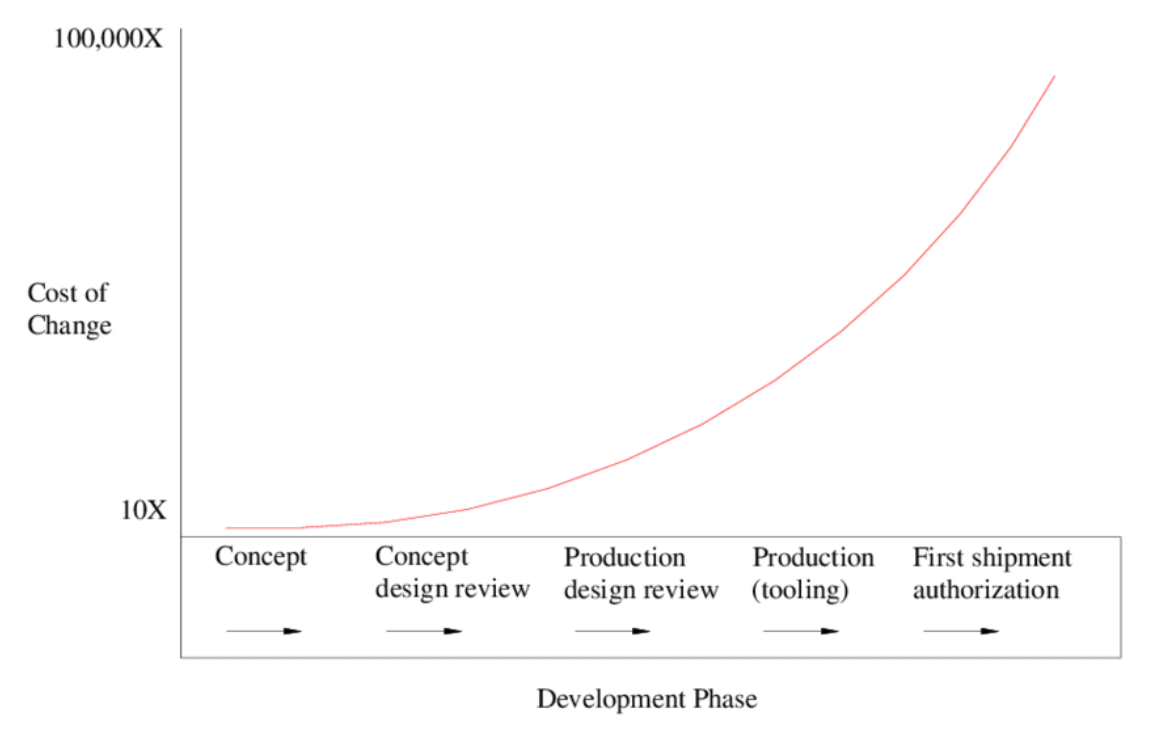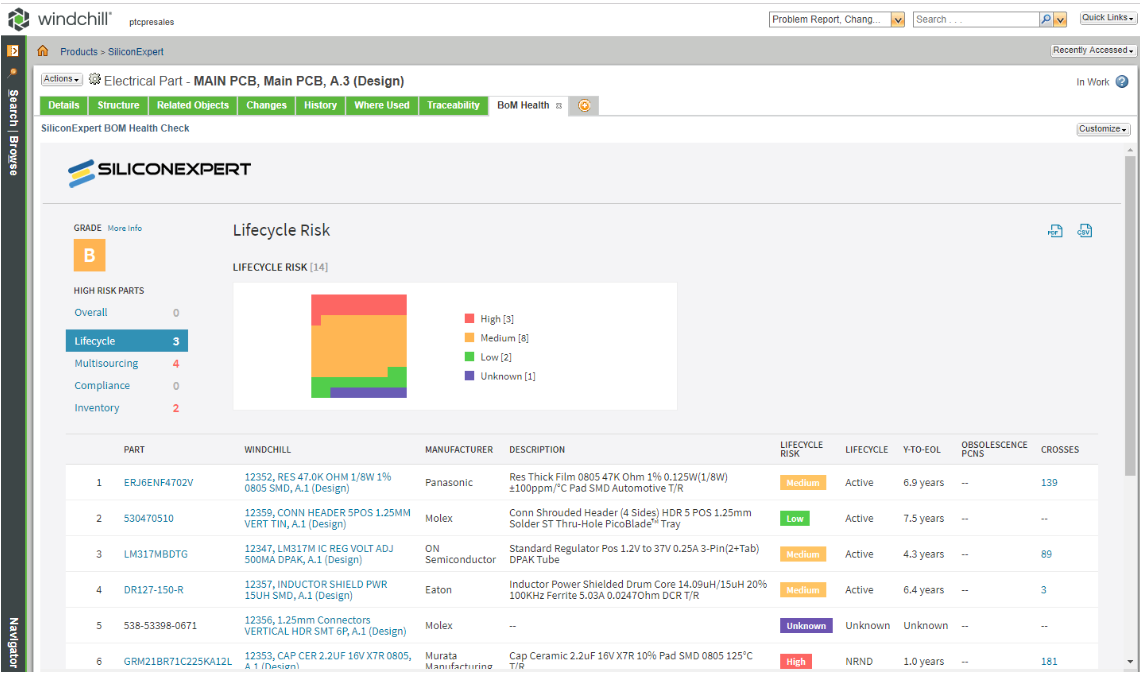PLM and EPDB Integration Whitepaper
White paper PLM and EPDB Integration
PLM and EPDB Integration
Abstract
This whitepaper explores the reasons and benefits of integrating a Product Lifecycle Management (PLM) system with a SaaS Electronic Part Database (EPDB). It shows the benefit of the data aggregation and consistency that an integration provides and illustrates the advantages this gives directly to the electronic design engineers such as managing risk, avoiding redesigns, and mitigating obsolescence.
Also, it shows how other roles of the business can benefit from this integration, for example, ensuring the reduction of stock levels and dramatically improving the sourcing of electronic components.
Finally, the paper investigates other parts of the product lifecycle, downstream from design, such as manufacturing, servicing and maintenance and shows how a full PLM/EPDB integration brings benefits from the cradle to grave of product development.
In addition, it describes what integration really means from a business and technical perspective.
Overview
Manufacturing companies typically purchase a significant portion of their parts to build their products. In the design phase, the engineers have to incorporate these components into their Bill of Materials (BoM) as a “Buy” component. This is especially relevant for electronic components that are, in the vast majority of cases, produced by a third-party manufacturer and assembled in production phase.
This adds a risk for the Manufacturer as introducing a poorly selected electrical component could affect the viability or longevity of their products. Electrical components, if not selected with enough due diligence upstream (in the design process) may need to be replaced downstream (in the manufacturing process). How is it possible to make sure the best electrical components in terms of viability and longevity are selected for your BoM and how to reduce the cost impact of change in case it is needed?
The cost of change
The more downstream the change is made, the more costly it is in terms of change impact. Modifying a part in Design phase has a managed impact on the overall cost while modifying a part in Production phase has a major impact as illustrated in the graphic.
Clearly providing the design engineer instant access to information on the part not only regarding its suitability in terms of function but also its other characteristics such as availability, anticipated end of life and compliance can ensure the correct component selection at an early stage.
However, the designer may consider these aspects as a high priority, as they are not directly affected by the issues that may occur.

Folkestad, James & L Johnson, Russell. (2001). Resolving the conflict between design and manufacturing: Integrated Rapid Prototyping and Rapid Tooling (IRPRT). J. Ind. Technol. 17.)
What are the risks on my electrical components?
Manufacturers select their electrical components based on a series of factors: fit, form and function, cost, shipping conditions… However, other variables need to be considered to ensure the quality of the BoM:
Obsolescence
Electronic part manufacturers discontinue regularly some of their components. When they enter in decline phase, they release a PDN (Product Discontinuance Notice) that predicts the end of the distribution of this part. How can the Manufacturer react to that PDN? They have three choices: stock the component before it is discontinued, redesign the product or find a cross (e.g. suitable replacement) for the affected component. The cost of the first 2 options may not be viable, only the third option is possible.
Compliance
Environmental regulation such as REACH (Registration, Evaluation, Authorization and Restriction of Chemical Substance) or ROHS (Restriction of Hazardous Substances Directive) are changing very fast as the list of restricted chemical substances is continuously updated, including more hazardous material. Manufacturers have to keep up to date or risk heavy fines.
Conflict Minerals
Conflict resources are natural resources extracted in a conflict zone and sold to perpetuate the fighting. There is both statistical and anecdotal evidence that belligerent accessibility to precious commodities can prolong conflicts (a “resource curse”). The four most commonly mined conflict minerals (known as 3TGs, from their initials) are cassiterite (for tin), wolframite (for tungsten), coltan (for tantalum), and gold ore, which are extracted from the eastern Congo, and passed through a variety of intermediaries before being purchased. These minerals are essential in the manufacture of a variety of devices, including consumer electronics such as mobile phones, laptops, and smart devices.
Counterfeit Components
Counterfeit electronic components are electronic parts that are misrepresented as to their origins or quality. Counterfeiting of electronic components can infringe the legitimate producer’s trademark rights.
Because counterfeit parts often have inferior specifications and quality, they may represent a hazard if incorporated into critical systems such as aircraft navigation, life support, military equipment, or space vehicles.
The marketing of electronic components has been commoditized, making it easier for the counterfeiter to introduce substandard and counterfeit devices into the supply chain.
Why is it essential to use an EPDB?
Each product BoM created or updated in a PLM by an organization should be analyzed against an EPDB to gauge its health. This is typically done using a combination of factors that are combined to give an overall grade; each company, based on the type of products it makes, will have a different level of importance on each element of the analysis. The categories of factors to monitor are: Lifecycle, Sourcing, Compliance and Inventory. In some cases, a single failure of a single component in one or more categories would be enough to put the BoM at high risk and require the replacement and/or redesign of the assembly.
Manually monitoring a BoM health given the constant flux of data provided by electrical component suppliers or regulation organisms has a very high cost in time and effort as well as a risk of missing updated information. If a high-risk BoM is not identified, then at a minimum it may negatively affect profitability of an organization but in the worst case may expose an organization to heavy fines or even litigation.
An EPDB will include 100s of million electrical components with their obsolescence, compliance and counterfeit information and is constantly updated to include real-time information. Therefore, it is an essential tool to manage the cost and risk of electronic part usage in products.
Why integrate an EPDB with your PLM system?
As seen above a manual BoM health check is extremely time consuming and error prone. Having a frictionless integration of your PLM system to the EPDB has many advantages such as:
→ Reducing the effort of Investigation - The engineers designing the PCB do not have a direct overview of the cost impact. In the face of the amount of data they manipulate, the pressure of the deadlines and their general responsibilities the longterm benefits of checking the health of their BoM can be reduced.
Therefore, it is important to provide them with an automated tool that offers an effortless access to the data.
→ Reducing the effort of Change - Once the health of the BoM is checked the Design Engineer may detect one or more parts that present a high obsolescence and/or compliance risk. In this case, the tool needs to automate the replacement step and offer a frictionless experience for modifying the BoM with real time data provided by the EPDB.

PTC’s Windchill PLM integrated with the SiliconExpert EPDB – SiliconExpert Connect Windchill Extension
→ Reducing the human error factor. An integration is only as good as the data it uses - “the devil is in the data”; an electronic component database will use many complex “fuzzy” algorithms to match the data sent to it, with data it has internally. The PLM part data is often inaccurate as it is often manually added, manufacturer names may be abbreviated, part numbers may be incomplete and of course we may just be a victim of the good old typo.
Automated matching can only go so far, it would be preferable to have clean, accurate data within the PLM. Automated data cleaning tools can be used to automate the cleaning of electronic data directly within the PLM, if possible, making corrections automatically but often giving human operator interfaces allowing them to rapidly correct data with hints given by the EPDB. It would be better not to post fix data but to only add accurate data to the PLM in the first place.
Data and levels of integration.
Integration is often considered to be binary, but in fact levels of integration bring more benefits at different levels. A “BoM health” integration gives a quick return on investment (ROI) but will be affected by the data accuracy in the PLM. Integrating the two systems at the level of the business processes gives further benefits, for example, at the stage of NPI (New Part Introduction) will give long term benefits obtained by improving quality of data that is added to the systems and ensuring a high standard of part selection. Another example of a closely coupled integration would be to veto approval of a high-risk BoM.
Conclusion
Industry 4.0 is pushing companies to become much more agile and is forcing them to integrate the upstream and downstream parts of the business. Monitoring the health of BoMs, and especially active BoMs, that are in a state of flux is essential to reduce costs and improve quality.
The PLM owns the BoM and the EPDB has critical information for each electronic part, so by integrating the two, an instant analysis of the BoM health is possible, making it quicker and easier to modify the product at the design stage giving substantial cost savings throughout the product lifecycle.
Closely integrating the EPDB in the PLM business processes and its UI allows the data created to be “clean at birth” and allows to put review gates into the release of the BoM, guaranteeing its quality, longevity and viability throughout the product lifecycle.
There is a dramatic ROI of integrating PLM and EPDB systems as it provides benefits across the business.
About Wincom
Wincom is a software development company that has more than 20 years’ experience producing solutions on top of PLM products, in particular PTC Windchill®. Our unique methodology allows us to build highly maintainable self-contained components that are easy to install and manage, reducing cost of ownership and the risks typically involved in customization.
We have over a hundred customers all over the world in sectors from Aerospace to Luxury Goods.